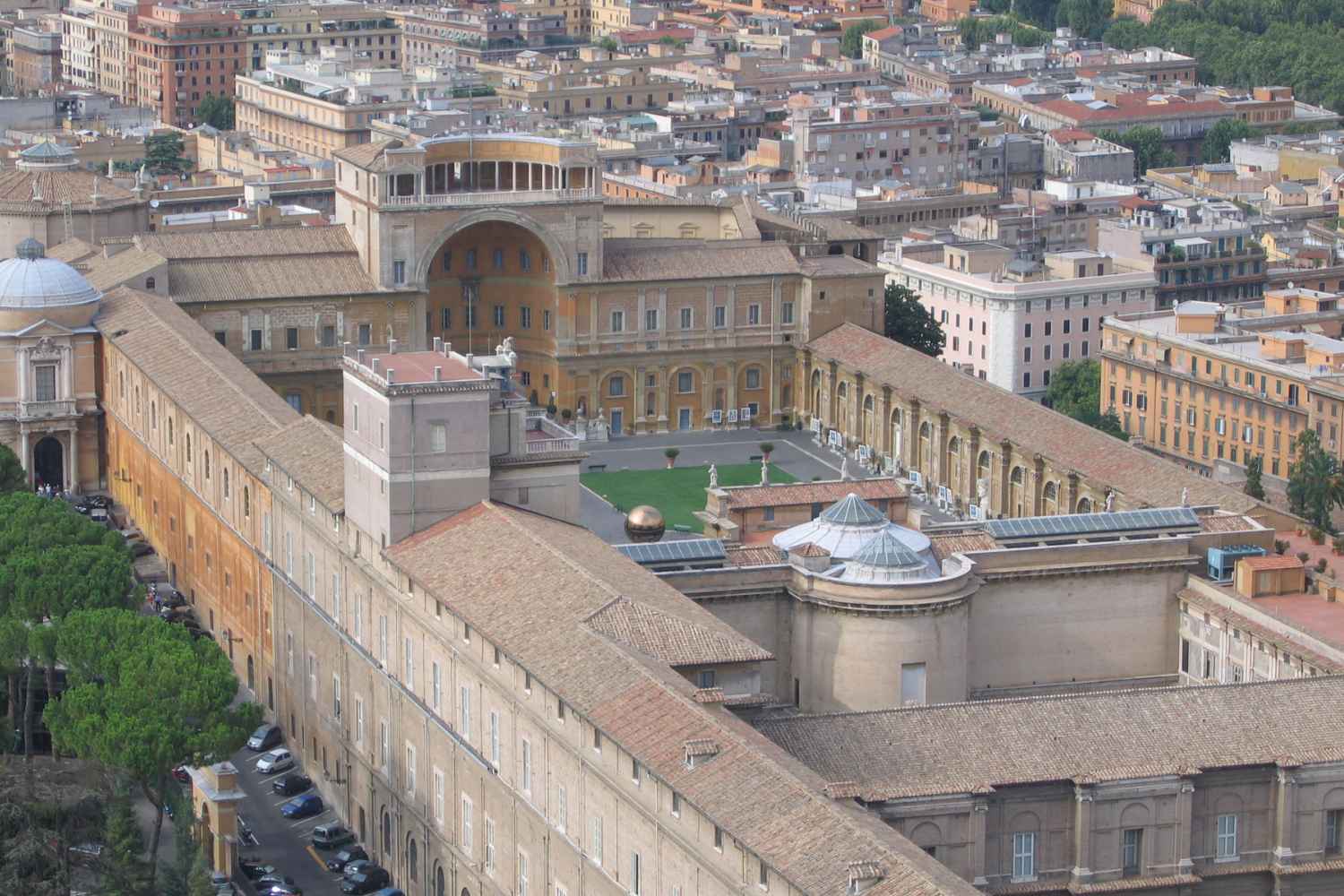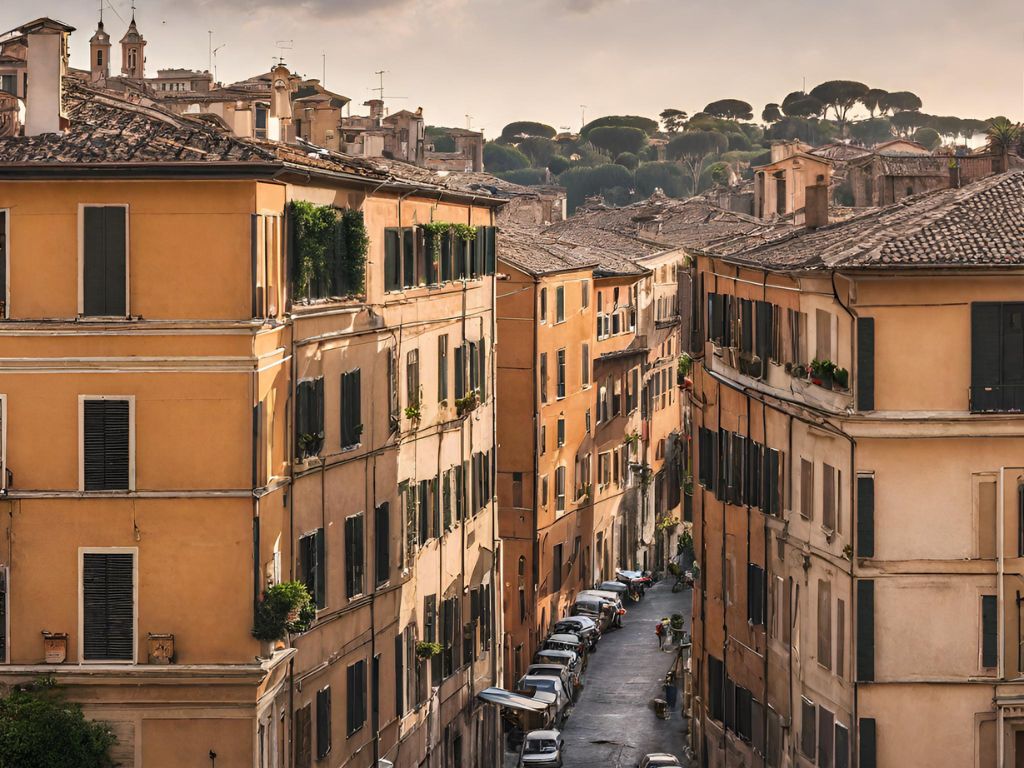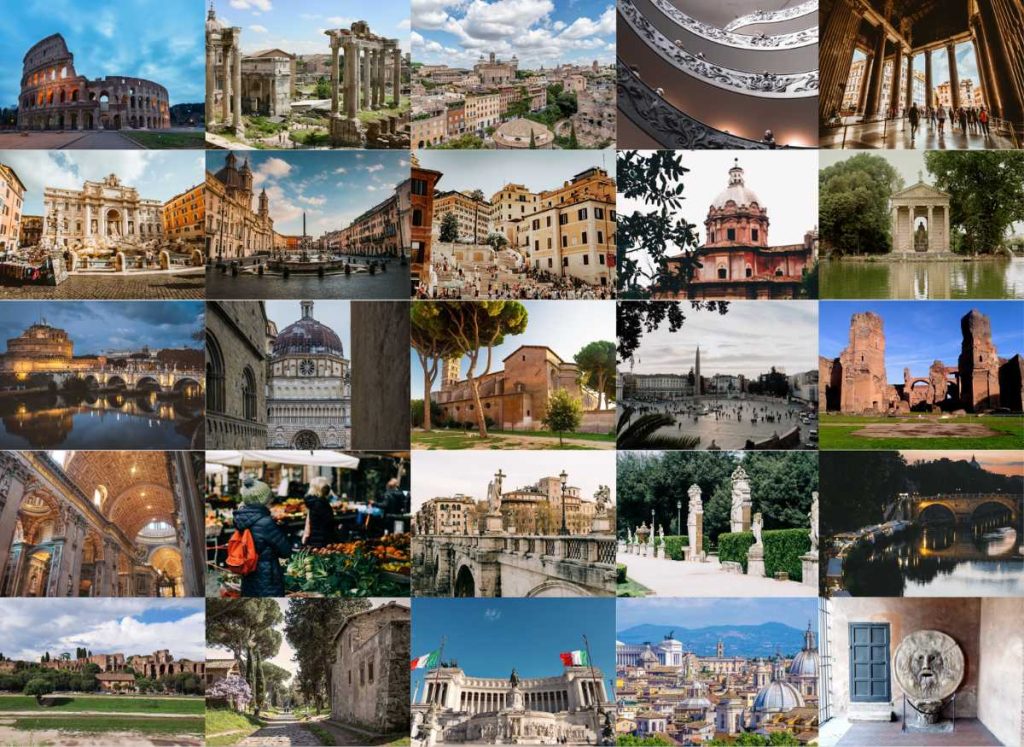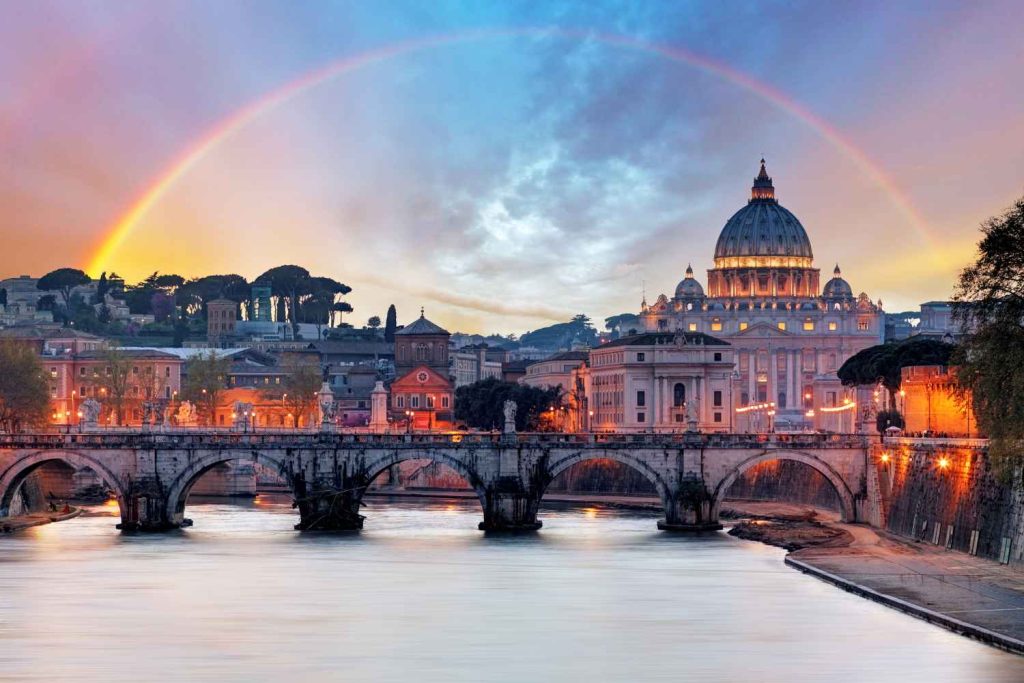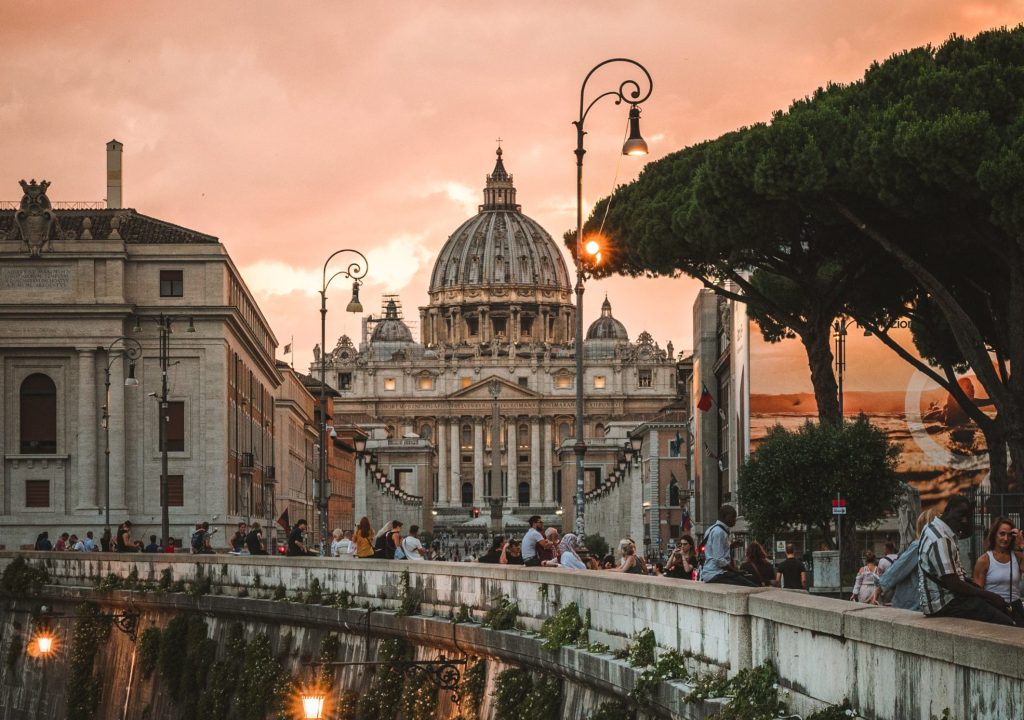Exploring the Symbolism & Grandeur of St. Peter’s Square: A Guide to Vatican City’s Iconic Landmark
Welcome to our guide on St. Peter’s Square, the iconic piazza located in the heart of Vatican City. As one of the most famous squares in the world, St. Peter’s Square holds a special place in the hearts of both locals and tourists alike. With its stunning architecture, rich history, and spiritual significance, this square is a must-visit destination for anyone exploring Rome.
Designed by the renowned Italian architect Gian Lorenzo Bernini, St. Peter’s Square is a masterpiece of Baroque art and an architectural marvel. The square is flanked by two colonnades, symbolizing the arms of the Catholic Church, embracing visitors as they enter. At the center stands an impressive Egyptian obelisk, a testament to the square’s ancient roots.
Steeped in history, St. Peter’s Square has been the site of numerous significant events, including papal blessings and ceremonies. It is also the gateway to St. Peter’s Basilica, the largest church in the world and a place of pilgrimage for millions of Catholics. Join us as we delve into the fascinating details and hidden gems of St. Peter’s Square, uncovering its secrets and exploring its timeless beauty.
The History of St. Peter’s Square
St. Peter’s Square in Vatican City is not just a beautiful square but also a place steeped in history. Let’s delve into the fascinating past of this iconic landmark.
Designed by Gian Lorenzo Bernini
St. Peter’s Square was designed by the renowned Italian architect Gian Lorenzo Bernini in the 17th century. Bernini was commissioned by Pope Alexander VII to create a grand entrance to St. Peter’s Basilica and to give the Vatican a monumental space for ceremonies and gatherings.
Symbolism in the Design
Bernini’s design for St. Peter’s Square is rich in symbolism. The square represents the arms of the Catholic Church, enveloping visitors in a warm embrace as they enter through the two colonnades. The colonnades, consisting of a total of 284 Doric columns and 88 pilasters, convey a sense of unity and inclusivity.
Piazza and Obelisk
The central part of the square, known as the piazza, features a magnificent Egyptian obelisk. This ancient Egyptian monument, originally from Heliopolis, was transported to Rome in 37 AD by Emperor Caligula. It was placed at the center of the square in 1586 by Pope Sixtus V. Standing at a staggering height of 25.5 meters, the obelisk adds grandeur to the square and serves as a symbol of the Church’s spiritual dominance.
Significant Events
Over the centuries, St. Peter’s Square has been the stage for many remarkable events. It has witnessed papal addresses, religious ceremonies, and the election of new popes during conclaves. One of the most notable events was the beatification of Pope John Paul II in 2011, which drew an enormous crowd to the square.
Timeless Beauty
The history of St. Peter’s Square is interwoven with the history of the Catholic Church itself. As visitors walk through the square, they can’t help but feel the weight of centuries of spirituality and the immense contributions the Church has made to the world.
From the genius of Bernini’s artistic vision to the breathtaking events that have taken place here, St. Peter’s Square continues to be an awe-inspiring destination for pilgrims and tourists alike. As we move forward in our exploration, let’s uncover more of the hidden gems and timeless beauty that this remarkable square has to offer.
Gian Lorenzo Bernini: The Architect Behind the Square
Gian Lorenzo Bernini, a renowned Italian architect and sculptor of the Baroque period, is credited with the design of St. Peter’s Square. Born in Naples in 1598, Bernini began his career at a young age, displaying exceptional talent and passion for his craft. He was appointed as the principal architect of St. Peter’s Basilica and Square by Pope Alexander VII in 1656, a position he held until his death in 1680.
Bernini’s design of St. Peter’s Square was a masterpiece of architectural ingenuity and spiritual significance. He embraced the idea of creating a welcoming space that would accommodate large gatherings and serve as a symbolic gateway to the Vatican. The square’s elliptical shape and the surrounding colonnade were meticulously planned to visually embrace and guide visitors towards the grandeur of St. Peter’s Basilica.
One of the most striking features of Bernini’s design is the colonnade, which consists of four rows of Doric columns, forming a welcoming embrace around the square. The columns are adorned with statues of various saints, creating a sense of reverence and spirituality. This architectural feature is also symbolic of the Church’s inclusive nature, where all believers are welcomed with open arms.
Another important aspect of Bernini’s design is the central location of an ancient Egyptian obelisk in the square. The obelisk, which dates back to the time of Emperor Caligula, was brought to Rome and erected in St. Peter’s Square in 1586. For Bernini, this obelisk represented the Church’s spiritual dominance and served as a visual reminder of the connection between ancient traditions and the Christian faith.
Throughout his career, Bernini’s contributions to St. Peter’s Square were highly regarded for their artistic and spiritual significance. His design not only transformed the space into a grand and visually stunning setting, but it also enhanced the overall experience for pilgrims and visitors from around the world.
Bernini’s legacy lives on in the timeless beauty and spiritual significance of St. Peter’s Square. His intricate design, attention to detail, and profound understanding of the relationship between architecture and spirituality continue to inspire architects and visitors alike. St. Peter’s Square stands as a testament to Bernini’s genius and his enduring impact on the world of architecture.
The Symbolism of the Colonnades
The colonnades that surround St. Peter’s Square are not just architectural elements, but they also hold deep symbolism. Designed by Gian Lorenzo Bernini, these colonnades consist of four rows of Doric columns adorned with statues of saints. They serve as a physical representation of the Church’s inclusive nature and its welcoming embrace of all believers.
The four rows of columns create a sense of enclosure, while also opening up to the square itself. This design is intentional, as it symbolizes the Church’s role as a guiding and nurturing presence. The columns, with their strong and sturdy structure, represent the strength and stability of the Church. They stand as a testament to the endurance of the faith throughout history.
The statues of the saints that adorn the colonnades further emphasize the Church’s inclusivity. Each saint represents a different aspect of the Christian tradition and serves as a reminder of the rich tapestry of believers that make up the Church. These statues not only provide an artistic embellishment to the square but also serve as a visual representation of the Church’s spiritual lineage.
Moreover, the arrangement of the statues creates a sense of movement and flow. They seem to guide visitors towards the grandeur of St. Peter’s Basilica, drawing their attention to the spiritual heart of the Vatican. This intentional design allows pilgrims and visitors to experience a gradual unveiling of the basilica’s magnificence as they approach it.
Bernini’s use of the colonnades in the design of St. Peter’s Square showcases his genius as an architect and his deep understanding of the symbolic power of architecture. The colonnades not only create a visually stunning setting but also enhance the overall experience for pilgrims and visitors. They serve as a reminder of the Church’s mission to welcome and guide all who seek spiritual solace and enlightenment.
In the next section, we will explore the significance of the central Egyptian obelisk in St. Peter’s Square and its connection to the Church’s spiritual dominance and the melding of ancient traditions with the Christian faith.
The Egyptian Obelisk at the Center
The focal point of St. Peter’s Square is undoubtedly the magnificent Egyptian obelisk that stands proudly at its center. This ancient monument holds immense significance, not only as a testament to the melding of ancient traditions with the Christian faith but also as a symbol of the Church’s spiritual dominance.
- Standing at a staggering height of approximately 25 meters (83 feet), the obelisk is the second-tallest ancient obelisk in Rome.
- It was originally brought to Rome from Heliopolis, an ancient city in Egypt, in 37 AD by Emperor Caligula. However, it was re-erected in its current location in the 16th century during the construction of St. Peter’s Square.
- The obelisk is made of red granite and is adorned with hieroglyphics that celebrate the reign of the pharaohs.
- At the top of the obelisk, you can find a cross, which serves as a powerful symbol of the Christian faith and further showcases the Church’s appropriation of ancient objects for religious purposes.
The presence of the Egyptian obelisk in St. Peter’s Square serves as a reminder of the Church’s historical continuity and its ability to embrace and incorporate diverse cultural traditions into its own. It represents the intersection between the ancient world and Christianity, highlighting the Church’s universal appeal and its connection to the broader human experience.
The positioning of the obelisk at the heart of St. Peter’s Square is no accident. It serves not only as a visual focal point but also as a metaphorical representation of the Church’s spiritual dominance. Just as the obelisk stands firm and elevated, the Church stands as a guiding presence and a beacon of faith for believers around the world.
Next, we will explore the grandeur of St. Peter’s Basilica and how it epitomizes the power and influence of the Catholic Church.
Significant Events at St. Peter’s Square
St. Peter’s Square has been witness to numerous significant events throughout history, underscoring its status as a central hub of the Catholic Church and a symbol of its power and influence. Let’s explore some of the most notable events that have taken place in this iconic square:
- Papal Inaugurations: One of the most momentous occasions at St. Peter’s Square is the papal inauguration, where the new pope is officially installed as the leader of the Catholic Church. Thousands of people gather in the square to witness this historic event, as the pope imparts his message of faith, unity, and hope.
- Beatifications and Canonizations: St. Peter’s Square is also the setting for beatifications and canonizations of saints, where individuals are officially recognized by the Church for their exemplary lives and contributions to the faith. These ceremonies attract pilgrims from all over the world, as they celebrate the lives of these remarkable individuals.
- Papal Blessings: The Pope delivers his blessings to the faithful gathered in St. Peter’s Square during special occasions, such as Christmas, Easter, and other important feasts. This tradition allows believers to receive the Pontiff’s spiritual guidance and signifies the Church’s role as a guiding presence in their lives.
- Papal Masses: St. Peter’s Square serves as the venue for Papal Masses, where the Pope celebrates the Eucharist and delivers his homilies to thousands of worshippers. These Masses are remarkable displays of unity and devotion, as the faithful come together to participate in this sacred ritual.
- World Youth Day: St. Peter’s Square has also hosted World Youth Day, a global event that brings together young Catholics from around the world. During this gathering, the Pope connects with the youth, inspiring them to deepen their faith and actively participate in the life of the Church.
St. Peter’s Square continues to be a place of significance and pilgrimage for millions of Catholics. Its historical importance and continued use for momentous events remind us of the enduring influence of the Catholic Church and its role in shaping the spiritual lives of believers.
Remember, St. Peter’s Square is not just a physical space but a symbol of unity, faith, and the timeless traditions of the Catholic Church.
Exploring St. Peter’s Basilica
As we delve further into the significance of St. Peter’s Square, it’s impossible to overlook the grandeur and magnificence of St. Peter’s Basilica. This iconic and awe-inspiring structure stands as one of the most important religious sites in the world, drawing millions of pilgrims and tourists each year.
- Architectural Marvel: Designed by renowned architects including Bramante, Michelangelo, and Bernini, St. Peter’s Basilica is a masterpiece of Renaissance and Baroque architecture. Its imposing dome, which dominates the Roman skyline, is particularly impressive.
- Religious Significance: St. Peter’s Basilica holds immense religious importance as the burial site of Saint Peter, one of the twelve apostles of Jesus Christ and the first Pope. It is believed that Peter’s tomb lies directly below the basilica’s high altar.
- Artistic Splendor: The interior of St. Peter’s Basilica is adorned with magnificent artworks by some of history’s greatest artists, including Michelangelo’s stunning Pietà and his renowned frescoes in the Sistine Chapel. The Basilica’s vast collection of sculptures, mosaics, and paintings further contribute to its artistic richness.
- Papal Functions: St. Peter’s Basilica serves as the principal location for several papal functions, including papal masses, papal audiences, and the papal coronation. The iconic balcony of St. Peter’s Basilica, known as the Loggia of Benedictions, is where the Pope delivers his Urbi et Orbi blessing.
Visiting St. Peter’s Basilica is a remarkable experience that allows us to witness the intersection of history, spirituality, and art in one monumental structure. Whether it’s standing beneath the awe-inspiring dome, marveling at incredible works of art, or feeling the spiritual ambiance, a visit to St. Peter’s Basilica is sure to leave a lasting impression.
Conclusion
St. Peter’s Square in Vatican City is a remarkable testament to the Church’s inclusive nature and its role as a guiding presence for believers. Designed by Gian Lorenzo Bernini, the colonnades enclose the square while also opening it up, symbolizing the Church’s welcoming embrace. The statues of the saints further emphasize the Church’s inclusivity and serve as a visual representation of its spiritual lineage. As visitors make their way towards St. Peter’s Basilica, they are guided by the arrangement of these statues, creating a sense of awe and anticipation.
St. Peter’s Basilica itself is an architectural marvel that holds immense religious and artistic significance. As the burial site of Saint Peter, it is a place where history, spirituality, and art intersect. The grandeur of the basilica and its magnificent artworks are a testament to the devotion and craftsmanship of countless artists throughout the centuries. Additionally, it serves as the principal location for several papal functions, further solidifying its importance within the Catholic Church.
Visiting St. Peter’s Square and Basilica is a truly awe-inspiring experience that allows us to appreciate the rich history, spirituality, and artistry that define this monumental structure. It is a place where believers and non-believers alike can come together, marvel at its beauty, and feel a sense of connection to something greater than themselves. St. Peter’s Square and Basilica are truly a testament to the enduring power and influence of the Catholic Church.
This article is part of our series on Vatican City. Explore all the attractions of this fascinating City at the heart of Europe. It’s truly a must-visit if you’re a visitor to Rome.
More articles you might like...
You can find more great Rome content in the following categories;
All about Vatican City Commonly Asked Rome Questions Rome Accommodation Rome Food and Drink Rome History and Culture Rome Neighbourhoods Rome Tours and Must-See Attractions
